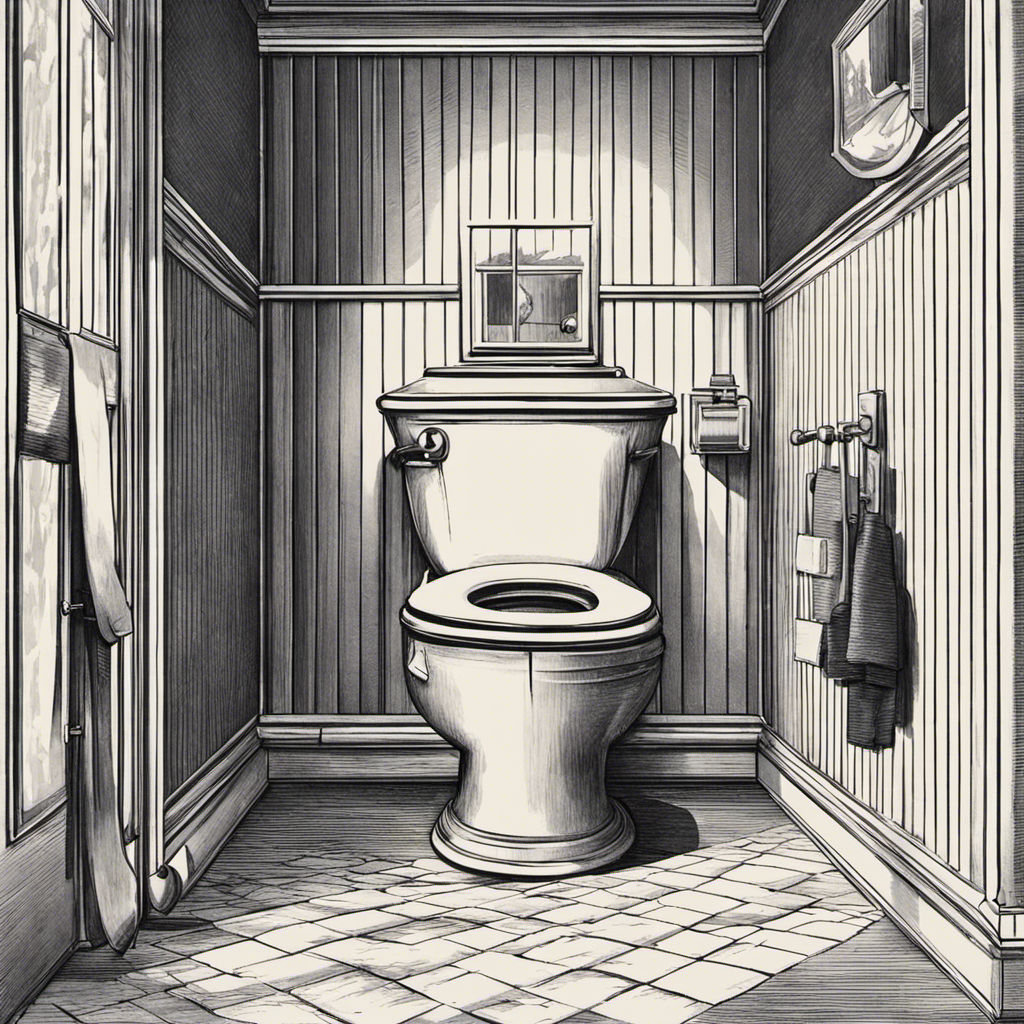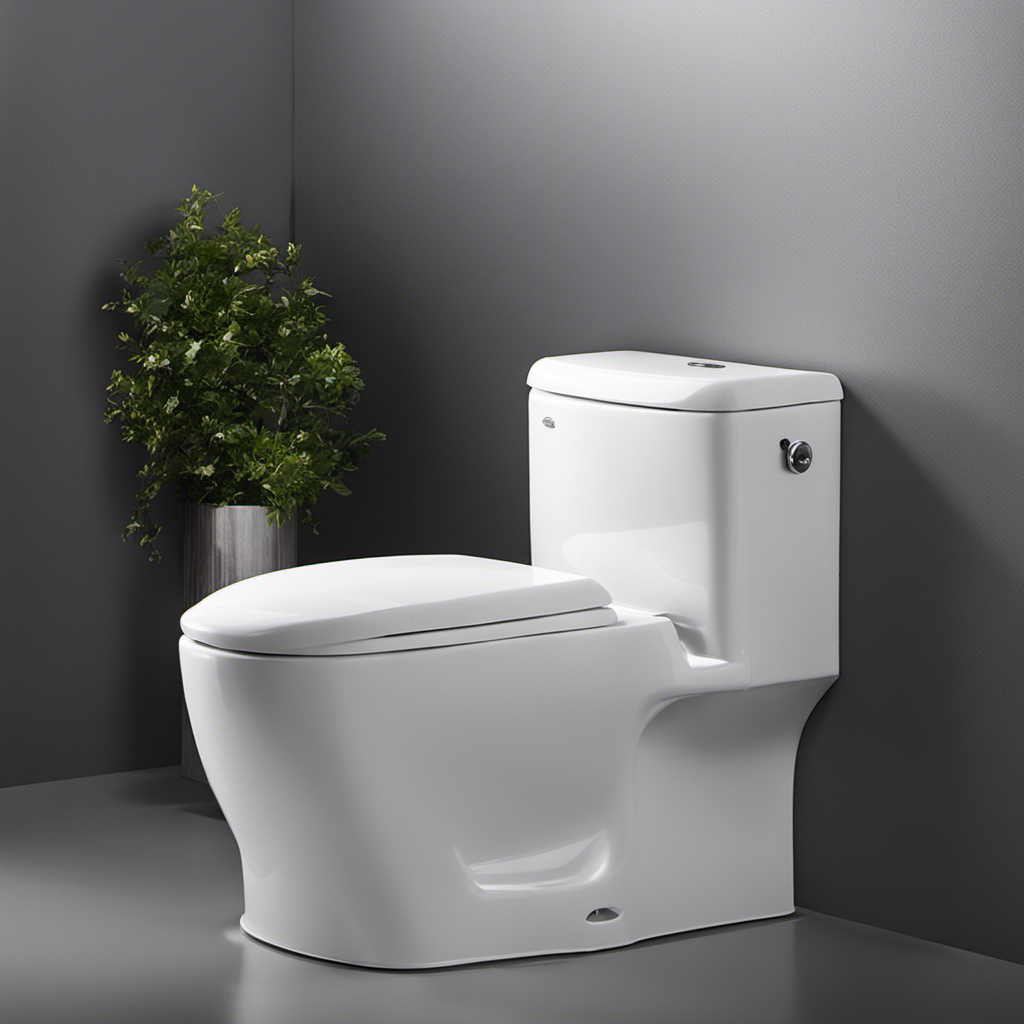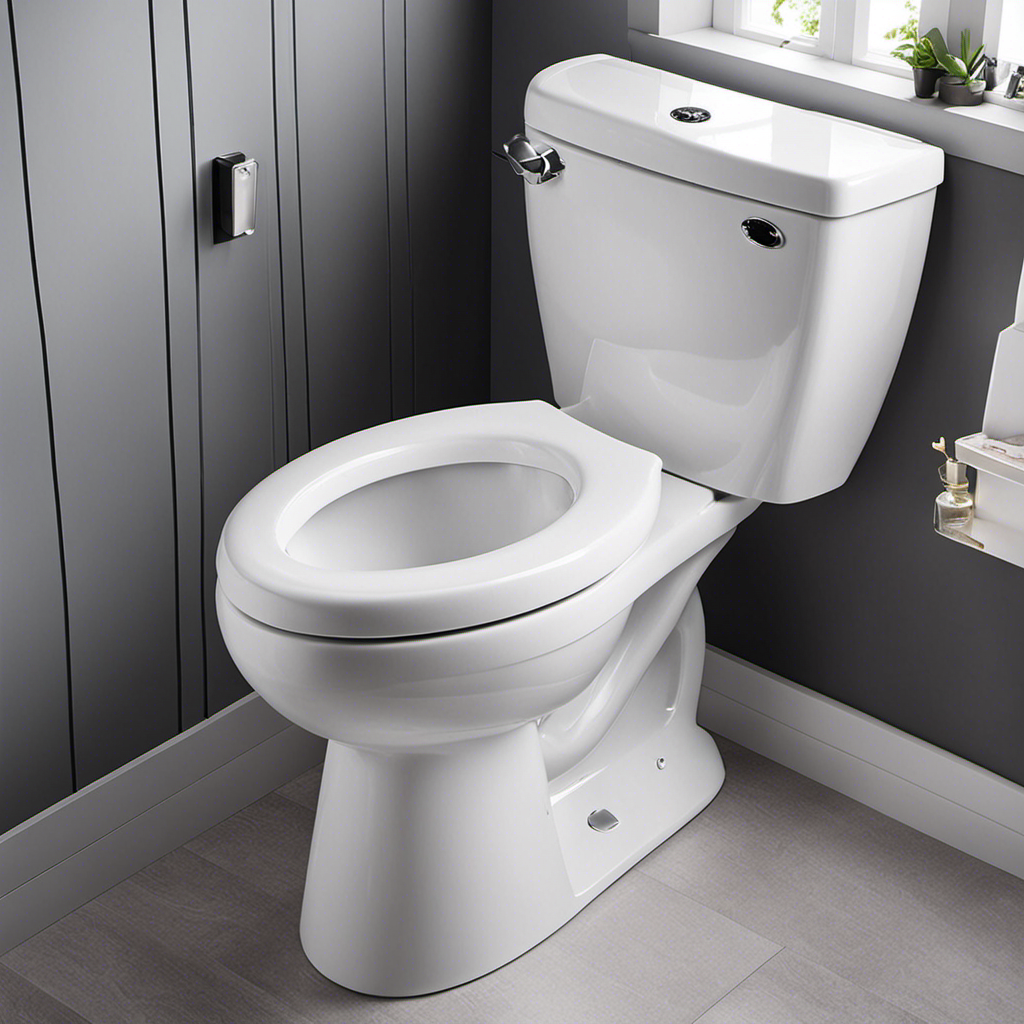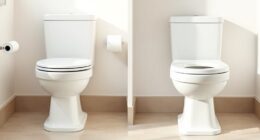Have you ever heard your toilet whistle? It’s a strange sound, like a haunting melody that echoes through the walls of your home. But what causes this mysterious symphony?
In this article, I will guide you through the common causes of toilet whistling, how to identify it, and the inner workings of your water supply system.
With DIY solutions and tips for prevention, you can put an end to this eerie serenade once and for all.
Let’s unravel the mystery of the whistling toilet together.
Key Takeaways
- Toilet whistling can be caused by a faulty fill valve, high water pressure, blockages in the water supply line, or inadequate ventilation.
- Professional help is important for resolving toilet whistling, as experts can diagnose and fix underlying issues using the necessary tools and knowledge.
- Regular maintenance, such as checking for loose connections, inspecting and cleaning the fill valve, and ensuring proper water pressure and ventilation, can help prevent toilet whistling.
- Maintenance not only prevents whistling and other common toilet problems, but also extends the lifespan of toilet components, saves money on repairs and replacements, and improves overall toilet performance, providing peace of mind for homeowners.
Common Causes of Toilet Whistling
One common cause of your toilet whistling is a faulty fill valve that needs to be replaced. When your toilet makes whistling sounds, it can be quite annoying and indicate an underlying issue. Troubleshooting toilet whistling requires a systematic approach to identify the root cause.
Start by checking the fill valve, which controls the water flow into the tank. A faulty fill valve can cause a high-pitched whistling noise. To replace it, turn off the water supply, flush the toilet, and remove the old fill valve. Install a new one according to the manufacturer’s instructions.
Additionally, check for any obstructions in the water supply line or the toilet’s vent stack. Clearing these blockages can also resolve the whistling problem.
How to Identify a Whistling Toilet
To identify a whistling toilet, listen for a high-pitched sound coming from the bathroom. This sound is often caused by a faulty fill valve or a worn-out flapper.
To troubleshoot the issue, start by checking the fill valve for any leaks or obstructions. Make sure the water level is not too high or too low, as this can also cause the whistling noise.
If the fill valve seems fine, inspect the flapper for any signs of wear or damage. Replace the flapper if necessary. Additionally, check the water supply line for any kinks or blockages.
If none of these steps solve the problem, it may be best to call a professional for toilet whistling repair.
Understanding the Water Supply System
Water pressure issues and a faulty fill valve can cause a range of problems in your water supply system.
When water pressure is too low, it can result in weak or insufficient flow. High water pressure, on the other hand, can lead to leaks and pipe damage.
A faulty fill valve can cause water to continuously run into the toilet tank. This not only wastes water but can also potentially cause overflowing issues.
Water Pressure Issues
If the water pressure is too high, it can cause your toilet to whistle. High water pressure can create turbulence in the pipes, leading to vibrations and noise. To troubleshoot water pressure issues and understand their impact on toilet functionality, consider the following:
- Water hammer: The sudden stop of water flow can cause a loud banging noise.
- Faulty fill valve: A malfunctioning fill valve can cause whistling sounds due to improper water flow regulation.
- Clogged pipes: Build-up of debris or mineral deposits in the pipes can restrict water flow, causing pressure fluctuations and whistling.
- Pressure regulator malfunction: If the pressure regulator fails, it can result in excessive water pressure, leading to toilet whistling.
- Water supply line issues: A damaged or partially closed water supply line can create irregular water pressure, causing the toilet to whistle.
Understanding these water pressure troubleshooting factors will help you identify and resolve the issue, ensuring proper toilet functionality.
Faulty Fill Valve
The faulty fill valve can cause whistling sounds in the toilet due to improper water flow regulation. When the fill valve malfunctions, it may not allow the water to flow smoothly into the tank, creating a high-pitched whistling noise. This noise can be quite annoying and disruptive, especially in quiet environments.
The fill valve is responsible for refilling the toilet tank after each flush, and if it is not functioning properly, it can lead to various issues, including noise. It is important to address this problem promptly to avoid further damage to the toilet and to restore the peace and quiet in your bathroom.
A professional plumber can diagnose and fix the faulty fill valve to eliminate the whistling noise and ensure proper water flow regulation in your toilet.
Fixing a Whistling Toilet: DIY Solutions
In this section, I will be discussing the possible causes and solutions for a whistling toilet, as well as preventive measures to avoid the issue in the future.
When it comes to the causes, a whistling toilet can be attributed to various factors. These include high water pressure, a faulty fill valve, or a worn-out flapper.
Fortunately, there are simple DIY solutions that can fix the issue. These solutions include adjusting the water pressure, replacing the fill valve, or fixing the flapper.
To prevent the toilet from whistling in the first place, regular maintenance is essential. This includes checking for leaks and ensuring proper water pressure.
Possible Causes and Solutions
One possible cause of your toilet whistling could be a faulty fill valve that needs to be replaced. If you’re experiencing this issue, here are some troubleshooting steps to consider:
- Check the water level in the tank and adjust if necessary.
- Inspect the fill valve for any signs of damage or wear.
- Clean the fill valve to remove any debris or mineral buildup.
- Ensure that the fill valve is properly aligned and seated in the tank.
- If all else fails, consider replacing the fill valve with a new one.
Toilet whistling can be caused by various common toilet problems, such as a malfunctioning fill valve, high water pressure, or a faulty flush valve. By following these troubleshooting steps, you can identify and resolve the issue, restoring peace and quiet to your bathroom.
Preventive Measures for Whistling
To prevent whistling, you should regularly inspect and clean the fill valve to remove any debris or mineral buildup.
Whistling in toilets can be caused by a variety of factors, including a faulty fill valve or a clogged water supply line.
By inspecting and cleaning the fill valve, you can ensure that it is functioning properly and prevent any potential whistling noises.
Start by turning off the water supply to the toilet and flushing it to drain the tank.
Then, remove the fill valve cap and inspect it for any debris or mineral buildup.
If necessary, use a soft brush or cloth to clean the valve and remove any obstructions.
Once clean, reassemble the fill valve and turn on the water supply.
This simple maintenance step can help prevent whistling and other common toilet problems.
Seeking Professional Help for Toilet Whistling
If you’re experiencing a whistling sound in your toilet, it might be a good idea to seek professional help. Whistling in toilets is often a sign of underlying issues that require expert attention.
Here are some reasons why professional plumbing assistance is essential for resolving toilet whistling:
- Faulty fill valve: A worn-out or improperly adjusted fill valve can cause whistling.
- Water pressure problems: High water pressure or blockages in the water supply line can lead to whistling.
- Ventilation issues: Inadequate ventilation can create pressure imbalances and result in whistling.
- Flapper problems: A malfunctioning flapper valve can cause whistling as it allows air to enter the system.
- Loose connections: Loose or faulty connections between components can lead to whistling.
Preventing Toilet Whistling: Maintenance Tips
Remember, regular maintenance such as checking for loose connections and ensuring proper ventilation can help prevent whistling in your toilet. When it comes to toilet whistle causes, there are several factors to consider. One common cause is a faulty fill valve, which can create a high-pitched sound as water flows into the tank. Another cause could be a malfunctioning flush valve, causing air to be trapped and creating a whistling sound during flushing. To prevent these issues, it is important to follow a maintenance routine. Here is a table outlining some preventive measures:
| Maintenance Tips | Frequency |
|---|---|
| Check fill valve | Every 6 months |
| Inspect flush valve | Annually |
| Clean jets | Every 3 months |
| Check water pressure | Regularly |
| Ensure proper ventilation | Regularly |
Frequently Asked Questions
How Long Does It Take to Fix a Whistling Toilet Using DIY Solutions?
Fixing a whistling toilet using DIY solutions can take anywhere from a few minutes to a few hours, depending on the cause of the issue and your level of experience.
Can a Whistling Toilet Cause Any Damage to the Plumbing System?
A whistling toilet can potentially cause damage to the plumbing system if left untreated. To troubleshoot, check for potential causes such as a faulty fill valve or water pressure issues. Prompt action is necessary to prevent further complications.
What Are the Potential Health Risks Associated With a Whistling Toilet?
The potential consequences of a whistling toilet can have health implications. It is important to address the issue promptly to prevent any further damage and ensure a safe and hygienic environment.
Are There Any Temporary Fixes to Silence a Whistling Toilet Until Professional Help Can Be Sought?
Temporary solutions for a whistling toilet include adjusting the water level, checking for clogs, and tightening loose parts. DIY remedies might involve replacing faulty valves or installing a pressure-reducing valve. However, professional help should be sought for a long-lasting fix.
Can a Whistling Toilet Affect the Water Pressure in Other Fixtures in the House?
Yes, a whistling toilet can affect water pressure in other fixtures. It could be due to a clogged or faulty fill valve, which restricts water flow. Regular maintenance and replacing worn parts can prevent toilet whistling.
Conclusion
In conclusion, identifying and fixing a whistling toilet may seem daunting, but it can be resolved with the right knowledge and steps.
Understanding the common causes, such as a faulty fill valve or blocked water supply, is key to diagnosing the issue. DIY solutions like adjusting water pressure or cleaning the fill valve can often solve the problem.
However, if the whistling persists, it is best to seek professional help. Remember, proper maintenance and regular inspections are key to preventing future toilet whistling.
So, next time you hear that annoying whistle, don’t panic. Just investigate and take action!










